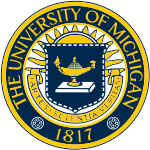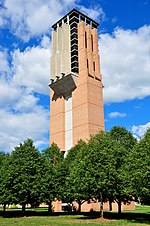Lurie Biomedical Engineering Center

The Ann and Robert H. Lurie Biomedical Engineering Building officially opened in August 2006. It was part of an expansion of the University of Michigan Biomedical Engineering Department (BME). The building houses researchers previously spread through several different University of Michigan campus locations. The project consists of 31,670 sq ft (2,942 m2) of new construction in the form of an addition, with 23,370 sq ft (2,171 m2) of renovated space in an existing building. Programs in the facility emphasize cellular and molecular biotechnologies. The addition contains research laboratory and support space. The renovation provides wet and dry teaching labs, classrooms, a computer classroom, support spaces, conference rooms, meeting rooms, faculty offices, a kitchen, and clerical support spaces.
Excerpt from the Wikipedia article Lurie Biomedical Engineering Center (License: CC BY-SA 3.0, Authors, Images).Lurie Biomedical Engineering Center
Beal Avenue, Ann Arbor
Geographical coordinates (GPS) Address External links Nearby Places Show on map
Geographical coordinates (GPS)
| Latitude | Longitude |
|---|---|
| N 42.288805555556 ° | E -83.713522222222 ° |
Address
Lurie Biomedical Engineering Building
Beal Avenue 1101
48109 Ann Arbor
Michigan, United States
Open on Google Maps









